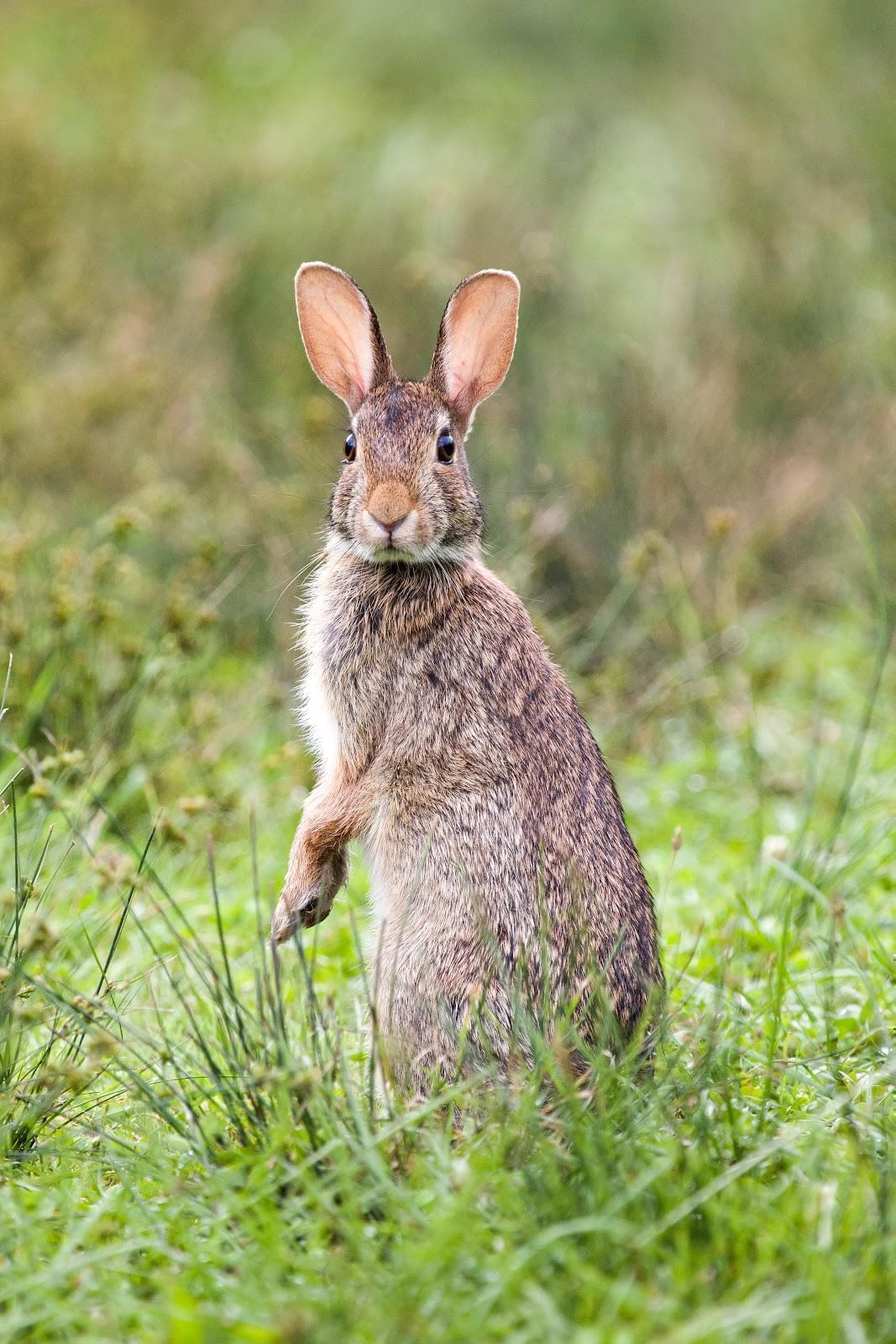Coexisting with Cottontails
Some people love rabbits. “Soooo cute!!! More bunnies please,” was the response from one friend when I posted a rabbit picture online recently. More people, perhaps, have mixed feelings about them. “Love bunnies, but baby just ate a large butterfly milkweed I bought a few days ago,” added another friend. There are also among us plenty of people who look at rabbits pretty much the same way Elmer Fudd looks at Bugs Bunny; some 60,000 Illinois residents hunt rabbits.
Whether you value them as food, objects of affection, or something in between, rabbits are fascinating creatures, and they’re among the wild mammals most of us are likely to encounter on a regular basis. That’s because they thrive in the sorts of habitat we create for ourselves—lawns of any sort, old fields, roadsides, railroad embankments, forest edges, etc.

Eastern Cottontail
When I say rabbits here, I’m referring to eastern cottontails, which occur statewide in Illinois; some southern counties where suitable habitat remains also support populations of swamp rabbits, which are a separate species.
Eastern cottontails are full size and sexually mature at just six months of age, and they really do breed like . . . well, you know. Female cottontails give birth to litters of four to six young as often as three times in a year. It’s a good thing for them, too, because the average lifespan of cottontails is only about a year.
In the words of the Field Manual of Illinois Mammals, “A rabbit’s life is full of danger.” The list of other animals that eats them includes coyotes, foxes, weasels, dogs and cats, as well as hawks, owls, crows and snakes. In addition, many rabbits are killed by cars, mowing and other human activity.
Some children, as well as adults of a certain sensibility, may be interested to learn that rabbits eat their own poop. That’s right, after consuming your beloved garden plants they scamper off to a sheltered spot where they excrete lightly digested fecal pellets, which they then re-ingest for more thorough processing the second time around.
A fact about rabbits that everyone should know is that mothers leave their young alone in the nest on purpose, so as to not attract the attention of predators. That means if you happen to find unattended baby rabbits it is important to leave them where they are and resist the urge to rescue them.
How does a person prevent rabbits from damaging plants? There are no easy, surefire answers to the question, but a website maintained by University of Illinois Extension called “Living with Wildlife” offers a number of possibilities. You can cut down on the amount of cover in your yard to make rabbits less comfortable there. And you can favor plants they don’t normally eat, although in tough circumstances they will eat just about anything. Or you can protect special plants with commercial repellents or wire mesh.
Most of the time wire mesh does the trick for me; I haven’t lost a butterfly milkweed since I started putting fence up on the same day I install new plants. But even fencing isn’t foolproof. Last summer, an enterprising mother rabbit in our yard leapt up to where she could wriggle through the wire and gave birth to a litter on the inside of the fence around our vegetable garden. So that struggle continues.

